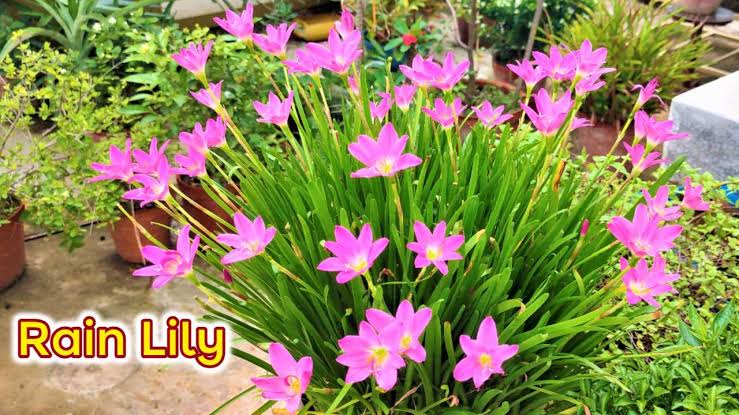Rain lilies (Zephyranthes spp.) are beautiful, low-maintenance flowers that are perfect for growing in rainy seasons. They are native to tropical and subtropical regions of the Americas, and they thrive in moist, well-drained soil.
Here are some tips on how to grow and Easy Care of Rain Lilies in rainy seasons:
- Choose a sunny spot. Rain lilies need full sun to flower well. If you live in a hot climate, you may want to plant them in a spot that gets some afternoon shade.
- Plant the bulbs in the fall. Rain lilies will bloom in the spring and summer, so it’s best to plant the bulbs in the fall so they have time to establish themselves before the rainy season begins.
- Water regularly. Rain lilies need moist soil, but they don’t like soggy soil. Water them deeply once a week, and more often during hot, dry weather.
- Fertilize lightly. Rain lilies don’t need a lot of fertilizer. A light application of a balanced fertilizer in the spring will help them to bloom well.
- Deadhead the flowers. Once the flowers have faded, deadhead them to encourage more blooms.
- Protect from frost. If you live in an area with cold winters, you may need to protect your rain lilies from frost. You can do this by mulching them with leaves or straw, or by moving them to a pot and bringing them indoors.

With proper care, rain lilies will thrive in rainy seasons and provide you with beautiful flowers for many years to come.
Here are some additional tips:
- Plant the bulbs 4-6 inches deep and 2-4 inches apart.
- Mulch around the plants to help retain moisture and suppress weeds.
- Rain lilies are relatively pest- and disease-free, but they may be susceptible to aphids and slugs.
- Divide the bulbs every 3-4 years to keep them healthy and vigorous.
I hope this helps!

